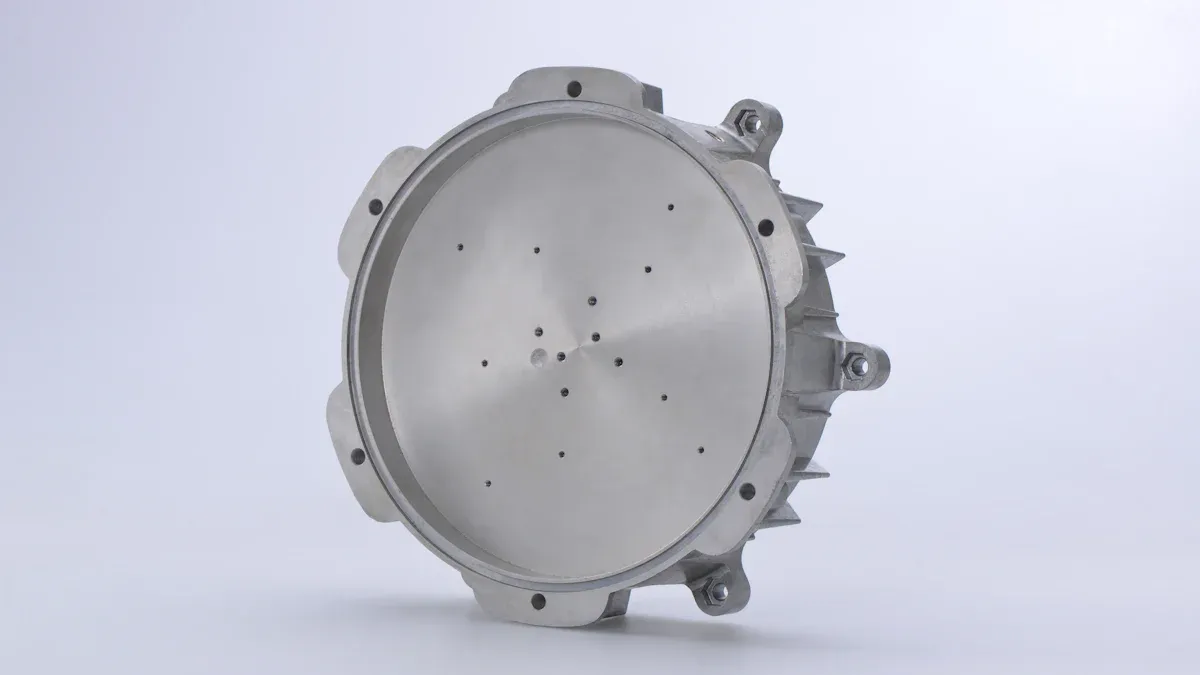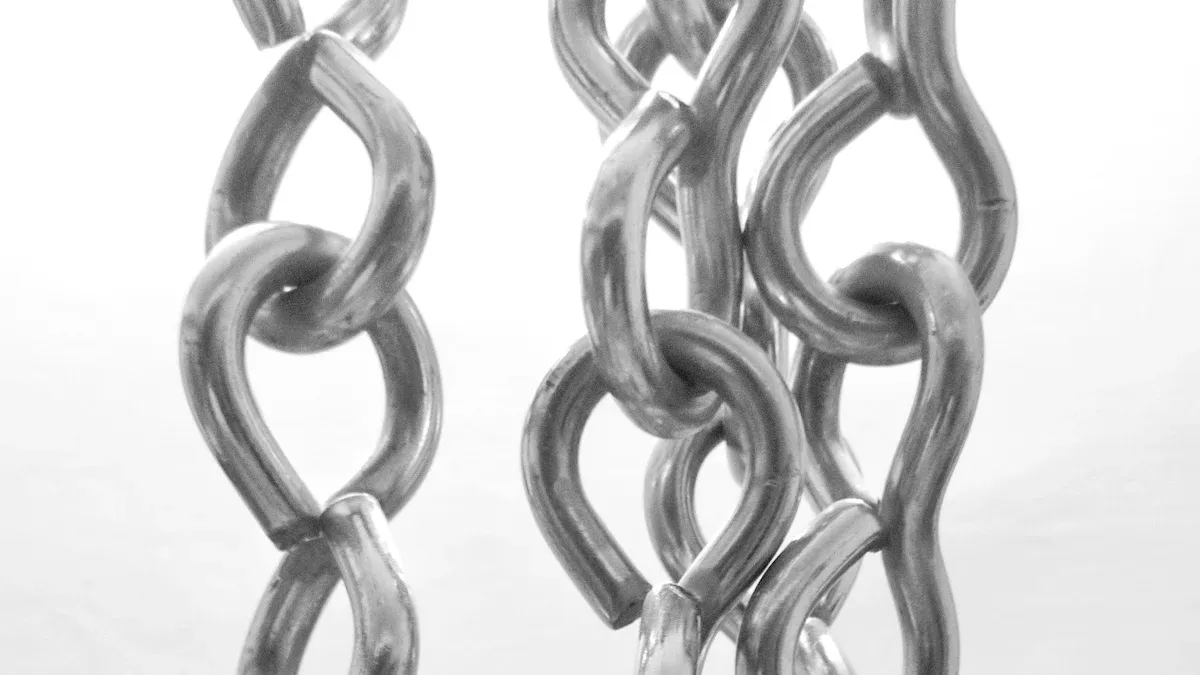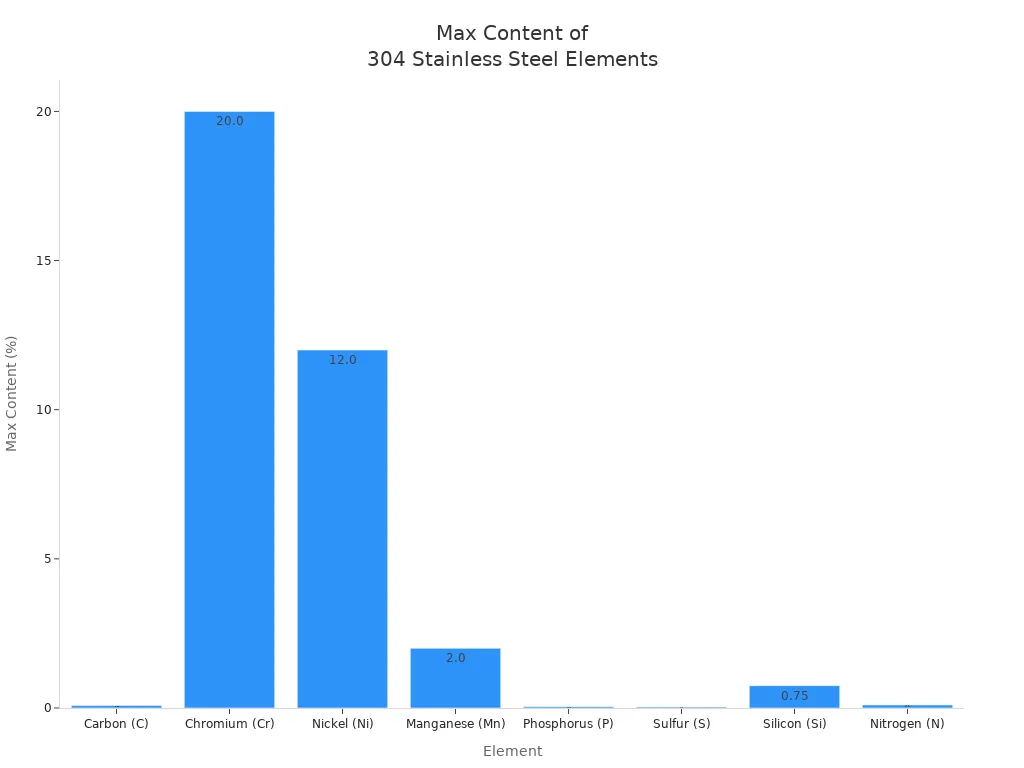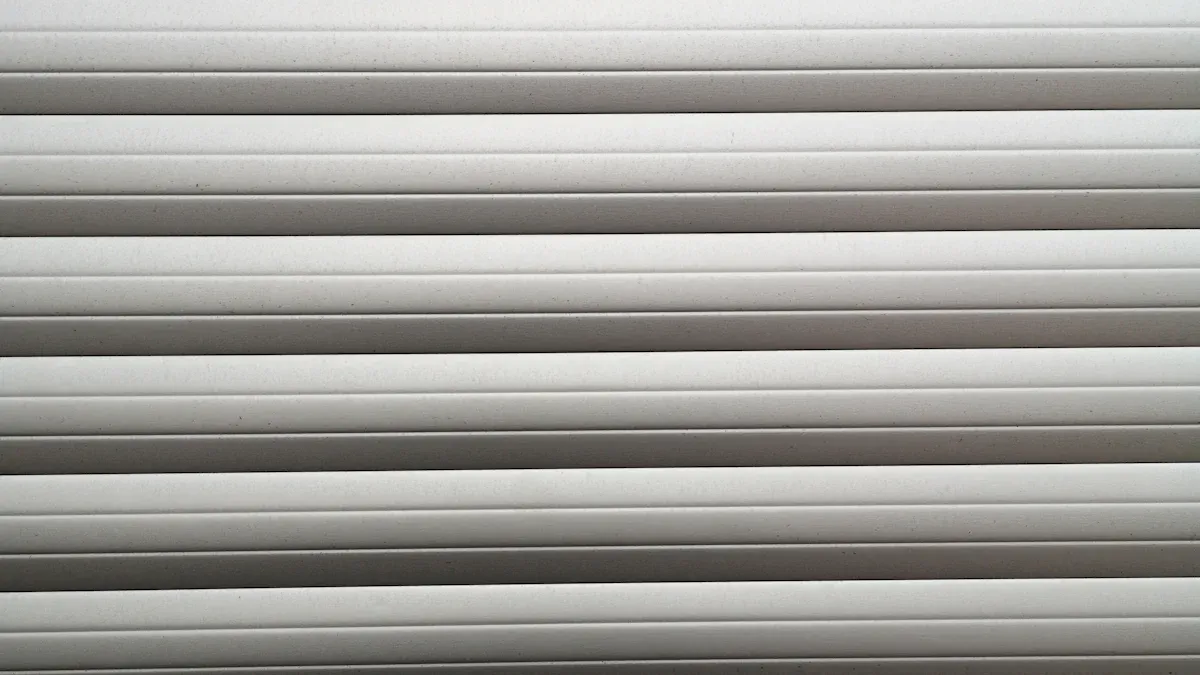
Разница между 304 кастинг из нержавеющей стали и 316 нержавеющая сталь Кастинг начинается с их химического макияжа. 316 нержавеющая сталь включает в себя молибден, который повышает его прочность в отношении ржавчины и суровых условий. Многие отрасли выбирают Инвестиционное литье из нержавеющей стали Для частей, которые должны длиться, в зависимости от требований работы.
Ключевые выводы
- 304 кастинг из нержавеющей стали предлагает хорошее сопротивление ржавчине и хорошо работает для повседневного использования в помещении, таких как кухни и пищевая промышленность.
- 316 литье из нержавеющей стали содержит молибден, что делает его сильнее против коррозии, особенно в соленых или суровых химических средах.
- Выберите 304 для бюджетных проектов в мягких условиях; Выберите 316 для морских, химических или наружных деталей, которые требуют дополнительной долговечности.
Разница между литьем из нержавеющей стали 304 и литьем из нержавеющей стали 316: определения

Что такое 304 кастинг из нержавеющей стали?
304 кастинг из нержавеющей стали является одним из наиболее распространенных типов нержавеющей стали, используемых по всему миру. Люди выбирают его своим сильным сопротивлением ржавчине и способности справляться со многими различными работами. Когда литейные заводы делают 304 отливки из нержавеющей стали, они таят металл и выливают его в плесени, чтобы создать детали с точными формами.
Вот быстрый взгляд на то, как разные страны и стандарты относятся к 304 нержавеющей стали.:
| Область/стандарт | Обозначение | Описание |
|---|---|---|
| США (айси) | 304 | Общий американский промышленный стандарт |
| Европа (en) | 1.4301 | Широко используемый европейский стандарт |
| Япония (JIS) | SUS 304 | Стандартное японское обозначение |
| Великобритания (BS) | 304S15 | Британский стандарт из нержавеющей стали |
| США (Sae) | 30304 | Автомобильный и аэрокосмический стандарт |
| США (астм) | A276 | Спецификация для стержней и форм нержавеющей стали |
| Германия (Din) | 1.4301 | Немецкий стандарт, эквивалентный en 1,4301 |
Основные ингредиенты в 304 нержавеющей стали включают железо, хром (около 18-20%) и никель (около 8-10,5%). Другие элементы, такие как углерод, марганец и кремний, содержатся низко, чтобы помочь металлу оставаться жестким и с ним легко работать. На приведенной ниже диаграмме показан максимальный содержание каждого основного элемента:

Хром помогает металлу противостоять ржавчине, в то время как никель делает его сильнее и легче в форме. Из -за этой смеси 304 отливки из нержавеющей стали хорошо работают на кухнях, продовольственных фабриках и многих машинах. Разница между литьем из нержавеющей стали 304 и литьем из нержавеющей стали 316 начинается с этих ингредиентов.
Что такое 316 кастинг из нержавеющей стали?
316 литье из нержавеющей стали является еще одним популярным выбором, особенно когда детали должны противостоять еще более жестким условиям. Большая разница между 304 литьем из нержавеющей стали и литьем из нержавеющей стали 316 состоит в том, что 316 содержит молибденам. Этот дополнительный элемент дает 316 из нержавеющей стали еще лучшую устойчивость к коррозии, особенно из соленой или суровой химикатов.
Файси используют тот же процесс литья для 316, что и для 304. Они растопили металл и выливают его в формы, чтобы создать прочные, детальные детали. Люди часто выбирают 316 отливок из нержавеющей стали для морского оборудования, химических резервуаров и медицинских инструментов. Эти части должны длиться долго, даже при воздействии влаги или агрессивных чистящих средств.
Разница между 304 литьем из нержавеющей стали и 316 литья из нержавеющей стали: композиция и свойства

Сравнение химического состава
Глядя на химический макияж, разница между литой из нержавеющей стали 304 и литьем из нержавеющей стали 316 сразу же выделяется. Оба типа содержат хром и никель, но 316 нержавеющая сталь имеет дополнительный ингредиент - молибден. Это небольшое изменение оказывает большое влияние.
| Элемент | 304 нержавеющая сталь (%) | 316 нержавеющая сталь (%) |
|---|---|---|
| Хром | 18.00 – 20.00 | 16.00 – 18.00 |
| Никель | 8.00 – 10.50 | 10.00 – 14.00 |
| Молибден | Не присутствует | 2.00 – 3.00 |
304 нержавеющая сталь обычно содержит около 18% хрома и никель 8%. Эта смесь хорошо работает для большинства повседневных целей. С другой стороны, 316 нержавеющая сталь имеет немного меньше хрома, но больше никеля, плюс 2-3% molybdenum. Этот молибден является секретом его дополнительной силы против коррозии. Итак, в то время как оба сплава выглядят одинаково, разница между 304 кастинг из нержавеющей стали и 316 кастинг из нержавеющей стали сводится к этому уникальному дополнению.
Коррозионная стойкость и долговечность
Коррозионное сопротивление - это то, где эти два типа действительно показывают свои различия. 304 нержавеющая сталь отлично справляется с ржавчиной на кухнях, в ванных комнатах и помещении. Однако, когда соль, химикаты или резкие чистящие средства вступают в игру, 316 из нержавеющей стали берет лидерство.
Молибден в 316 нержавеющая сталь Повышает его способность противостоять коррозии ячеек и расщелины, особенно в местах с большим количеством соли или химикатов. Это делает 316 лучшим выбором для морских деталей, химических резервуаров и наружного оборудования возле океана. Молибден работает, делая защитный слой оксида на стали сильнее и труднее сломаться. Даже если поверхность поцарапается, 316 нержавеющая сталь может восстановить себя лучше, чем 304.
Совет: Если проект включает в себя морскую воду, химические вещества в бассейне или прочные чистящие средства, литье из нержавеющей стали 316 продлится намного дольше, чем 304.
В морской среде 316 нержавеющая сталь может длиться десятилетиями, иногда до 260 лет до появления серьезных повреждений. 304 нержавеющая сталь, без молибдена, может начать показывать признаки износа гораздо раньше в тех же условиях. Для большинства внутренних или менее агрессивных настройки 304 из нержавеющей стали все еще обеспечивает длительный срок службы и твердую защиту.
Когда дело доходит до силы, оба типа сложны, но есть некоторые различия:
| Свойство | 304 кастинг из нержавеющей стали | 316 кастинг из нержавеющей стали |
|---|---|---|
| Прочность на растяжение (MPA) | 500-700 | 400-620 |
| Сила урожайности (MPA) | 312 | 348 |
| Твердость (Роквелл б) | 70 | 80 |
316 литье из нержавеющей стали имеет более высокую прочность и твердость урожая, что означает, что он может справиться с большим давлением, прежде чем изгибаться или носить. Это делает его лучше для тяжелых рабочих мест в жесткой среде.
Стоимость и типичное использование
Стоимость часто играет большую роль в выборе между этими двумя типами. 304 литье из нержавеющей стали стоит дешевле, потому что он не содержит молибдена и имеет меньше никеля. Для проектов, где экстремальная коррозионная стойкость не требуется, 304 является бюджетным вариантом.
316 литье из нержавеющей стали стоит дороже - иногда 40% до 75% выше 304. Со временем использование 316 может сэкономить деньги, сократив ремонт и замены в суровых настройках.
Вот некоторые распространенные применения для каждого типа:
| Тип нержавеющей стали | Общие промышленные применения |
|---|---|
| 304 нержавеющая сталь | Домашние продукты (посуда, шкафы, крытые трубопроводы, водонагреватели, котлы, ванны), автомобильные детали (стеклоочистители, глушители, литые продукты), медицинское оборудование, строительные материалы, химическая промышленность, пищевая промышленность, сельское хозяйство, запчасти для судов) |
| 316 нержавеющая сталь | Оборудование для морской воды, химиката, красителя, бумаги, щавелевой кислоты, производства удобрений; фотография; пищевая промышленность; прибрежные объекты; веревки, болты, гайки; Автомобильные шестерни; нефтехимическая обработка оборудования; бумажная и целлюлозная промышленность; морская среда; фармацевтические препараты; хирургическое оборудование; корпусы |
- 304 Листика из нержавеющей стали хорошо работает для кухонных раковинов, пищевого оборудования и крытых труб.
- 316 литье из нержавеющей стали-это мастер для морских оборудования, химических резервуаров, медицинских инструментов и открытых светильников возле побережья.
Разница между литьем из нержавеющей стали 304 и литьем из нержавеющей стали 316 часто сводится к тому месту, где будет использоваться деталь, и сколько необходимо устойчивость к коррозии. Если окружающая среда является мягкой, а стоимость вызывает беспокойство, 304 - твердый выбор. Для суровых, соленых или химических условий, 316 стоит инвестиций.
Разница между литьем из нержавеющей стали 304 и литьем из нержавеющей стали 316 сводится к тому месту, где сияет каждый. Проверьте это быстрое сравнение:
| Особенность | 304 нержавеющая сталь | 316 нержавеющая сталь |
|---|---|---|
| Коррозионная стойкость | Хорошо для большинства видов использования | Лучше всего подходит для суровых, соленых или химических условий |
| Расходы | Ниже | Выше |
Они оба длится долго, но молибден 316 помогает ему справиться с жесткой работой. Для общих проектов 304 работает хорошо. Для морских или химических областей 316 - лучший выбор.
Часто задаваемые вопросы
Что делает 316 из нержавеющей стали лучше для морского использования?
Молибден в 316 из нержавеющей стали помогает противостоять коррозии соленой воды. Это делает его лучшим выбором для лодок, доков и прибрежного оборудования.
Можете ли вы сварки как 304, так и 316 отливок из нержавеющей стали?
Да, оба типа могут быть сваренныйПолем 316 Нержавеющая сталь нуждается в специальном материале для наполнителя для достижения наилучших результатов. Всегда очищайте площадь сварного шва для сильных суставов.
Безопасно ли кастинг из нержавеющей стали 304 для контакта с едой?
- Да, 304 нержавеющая сталь это безопасно.
- Многие кухни и фуд -фабрики используют его для раковины, счетчиков и посуды.
- Он сопротивляется ржавчине и сохраняет еду чистой.
